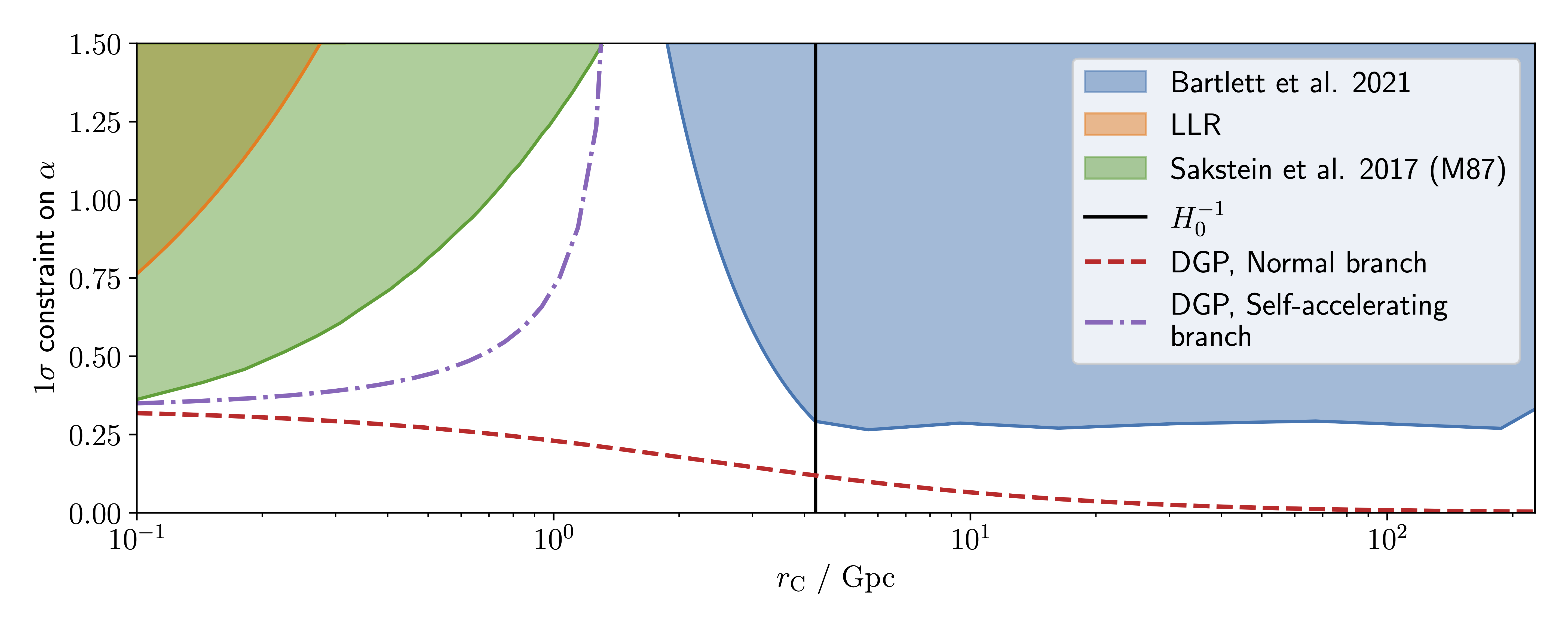Constraints on Galileons from the positions of supermassive black holes
Published in Phys. Rev. D, 103(2):023523, 2021
Recommended citation: D.J. Bartlett, H. Desmond and P.G. Ferreira (2021). "Constraints on Galileons from the positions of supermassive black holes" Phys. Rev. D, 103(2):023523.
Abstract
Galileons are scalar field theories which obey the Galileon symmetry $\varphi \to \varphi + b + c_\mu x^\mu$ and are capable of self-acceleration if they have an inverted sign for the kinetic term. These theories violate the Strong Equivalence Principle, such that black holes (BHs) do not couple to the Galileon field, whereas non-relativistic objects experience a fifth force with strength $\Delta G / G_{\rm N}$ relative to gravity. For galaxies falling down a gradient in the Galileon field, this results in an offset between the centre of the galaxy and its host supermassive BH. We reconstruct the local gravitational and Galileon fields through a suite of constrained N-body simulations (which we dub CSiBORG) and develop a Monte Carlo-based forward model for these offsets on a galaxy-by-galaxy basis. Using the measured offset between the optical centre and active galactic nucleus of 1916 galaxies from the literature, propagating uncertainties in the input quantities and marginalising over an empirical noise model describing astrophysical and observational noise, we constrain the Galileon coupling to be $\Delta G / G_{\rm N} < 0.16$ at $1\sigma$ confidence for Galileons with crossover scale $r_{\rm C} \gtrsim H_0^{-1}$.
 Constraints on the coupling of a cubic Galileon to matter, $\alpha$, as a function of the crossover scale, $r_{\rm C}$, from lunar laser ranging (LLR), the BH at the centre of M87 and this work. The shaded regions are excluded at $1\sigma$ confidence. We also plot the $\alpha-r_{\rm C}$ curves for the normal and self-accelerating branches of the DGP model.
Constraints on the coupling of a cubic Galileon to matter, $\alpha$, as a function of the crossover scale, $r_{\rm C}$, from lunar laser ranging (LLR), the BH at the centre of M87 and this work. The shaded regions are excluded at $1\sigma$ confidence. We also plot the $\alpha-r_{\rm C}$ curves for the normal and self-accelerating branches of the DGP model.
